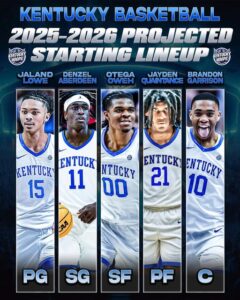
Greg Dortch and the Cardinals sign an RFA tender.
The NFL offseason is often characterized by a series of roster moves, signings, and negotiations that set the stage for the next season. One such move that drew attention recently was the Arizona Cardinals’ decision to offer wide receiver Greg Dortch a Restricted Free Agent (RFA) tender. For fans and analysts alike, this signing serves as a point of interest given Dortch’s journey through the NFL and his growing role with the Cardinals.
In this article, we will explore the significance of Dortch’s RFA tender, the rules governing Restricted Free Agency, and how this move impacts both the player and the team. We will also delve into the broader context of Dortch’s career, his performance with the Cardinals, and what his future might hold.
1. Understanding Restricted Free Agency (RFA)
Before diving into the specifics of Greg Dortch’s situation, it’s important to understand the mechanics of Restricted Free Agency. In the NFL, players with fewer than four accrued seasons of service time are eligible for restricted free agency, provided their contract has expired.
Here’s how the process works:
- Restricted Free Agent Tender: A team can offer a player an RFA tender, which is essentially a one-year contract with a set salary. The value of the tender is determined by the player’s experience and the salary cap. There are typically three levels of tenders:
- First-round tender: The highest value, where the player is guaranteed a one-year salary equal to the average of the top 10 salaries at the player’s position. If another team signs the player, the original team receives a first-round draft pick as compensation.
- Second-round tender: A lower-value tender, where the player’s one-year salary is lower than the first-round tender but still a substantial amount. If another team signs the player, the original team gets a second-round pick as compensation.
- Original-round tender: The lowest value, where the salary is based on the player’s previous year’s salary. If another team signs the player, the original team only receives a pick based on the player’s draft round.
The team that offers the tender retains the right to match any offer sheet the player might sign with another team. If the original team does not match the offer, they can receive compensation in the form of draft picks depending on the level of tender offered.
For Greg Dortch, the Arizona Cardinals’ decision to offer him an RFA tender means they are looking to keep him on the roster for at least one more season while maintaining some control over his future.
2. The Path of Greg Dortch’s Career
To fully appreciate the significance of Dortch’s RFA tender, it’s essential to understand his journey to this point. Dortch, a small but dynamic wide receiver, went undrafted in 2020 after a solid college career at Wake Forest. Despite his relatively small stature (5’7″, 173 pounds), Dortch displayed impressive speed, quickness, and the ability to make plays in both the passing and return games.
After going undrafted, Dortch joined the New York Jets as a rookie but was waived and spent time on their practice squad. It wasn’t until he signed with the Arizona Cardinals in 2021 that he began to carve out a role in the NFL. Dortch made an immediate impact with the Cardinals, showcasing his quickness, reliability as a slot receiver, and versatility as a return man. By the 2022 season, Dortch had established himself as a valuable depth piece in Arizona’s receiving corps.
In 2022, Dortch appeared in 16 games, starting five, and accumulated 467 receiving yards and two touchdowns. His ability to run precise routes and operate out of the slot made him an attractive option for the Cardinals, especially considering the team’s struggles with consistency at the wide receiver position. Despite the team’s tumultuous season, Dortch’s contributions did not go unnoticed.
In 2023, Dortch continued to show growth as a receiver, demonstrating his potential as a reliable target for the Cardinals’ quarterbacks. His familiarity with the offense, coupled with his strong work ethic and explosive playmaking ability, made him a key player in the team’s plans moving forward.
3. The Arizona Cardinals’ Perspective
The decision to offer Greg Dortch a Restricted Free Agent (RFA) tender indicates that the Arizona Cardinals view him as a valuable asset for their future. The team is in the midst of a rebuilding phase, with a focus on young talent and developing key players at important positions. In this context, Dortch represents a solid, inexpensive option for the receiving corps.
The Cardinals have experienced significant changes in recent years, particularly with the retirement of long-time quarterback Kyler Murray’s mentor, quarterback Colt McCoy, and the hiring of new coaching staff. With these changes comes the need to stabilize the roster, especially at the wide receiver position. While the Cardinals have invested in other wideouts, such as DeAndre Hopkins (prior to his departure) and Marquise Brown, there’s a growing need for depth at the position.
Dortch’s versatility is a huge benefit to the team. His ability to line up both inside and outside, combined with his playmaking ability in the return game, allows the coaching staff to use him in a variety of roles. Furthermore, his consistency and relatively low cost due to the RFA tender make him a low-risk player for the Cardinals. The team can continue to develop him, and if he has a breakout season, they can work out a longer-term deal in the future.
Offering Dortch the RFA tender also gives the Cardinals flexibility. If another team were to sign Dortch to an offer sheet, Arizona would have the opportunity to match that offer or receive draft pick compensation. This gives the team some protection and the ability to control Dortch’s future in the organization.
4. The Impact on Greg Dortch’s Future
For Greg Dortch, signing the RFA tender represents a significant moment in his career. While the tender guarantees him a one-year contract at a predetermined salary, it also provides him with the opportunity to prove his value further in the league.
As an RFA, Dortch does not have the freedom to sign with any team unless the Cardinals choose not to match an offer sheet. However, the fact that the Cardinals have shown interest in retaining him indicates that they believe in his potential. For Dortch, this is a crucial year to solidify his place in the league and prove he can be more than just a complementary piece to a team in flux.
In many ways, RFA status represents a “prove-it” year for a player. Dortch will have the opportunity to showcase his skills on a more consistent basis, potentially earning a larger contract down the road. If he continues to develop and performs well for the Cardinals, the team could offer him a long-term extension, securing his place in Arizona’s future plans.
Moreover, the RFA tender provides Dortch with financial security for the upcoming season. While the amount may not be as high as a lucrative multi-year deal, it offers a reasonable compensation for a player still developing in the NFL. If Dortch exceeds expectations in 2023, he will be in a better position to negotiate a more lucrative contract in future offseasons.
5. What’s Next for Greg Dortch and the Cardinals?
Looking ahead, the future appears promising for both Greg Dortch and the Arizona Cardinals. The Cardinals are undergoing a rebuild, and their receiving corps remains a work in progress. If Dortch continues to impress in training camp and through the preseason, he could become a key piece in their offensive plans for 2023 and beyond.
The team will likely continue to invest in improving its offense, whether through the draft or free agency. However, the presence of a player like Dortch—who can contribute as a reliable slot receiver and return specialist—could help provide a bridge for the team as it looks to retool and rebuild.
For Dortch, the 2023 season could be his breakout year. If he can continue to improve his chemistry with the team’s quarterbacks and take on a larger role in the offense, he may secure a long-term contract with the Cardinals or another team in the future.
Greg Dortch’s decision to sign an RFA tender with the Arizona Cardinals marks an important moment in his NFL career. It signals that the Cardinals value him as part of their rebuilding process and that Dortch has an opportunity to further prove himself in the league. With his versatility, quickness, and potential for growth, Dortch is poised to make a significant impact on the Cardinals’ offense in the upcoming season. For Dortch, it’s a chance to solidify his place in the NFL, and for the Cardinals, it’s another step toward building a competitive roster for the future. Whether he remains with the team long-term or moves on after a successful season, Dortch’s journey through the NFL continues to evolve.
One such move that drew attention recently was the Arizona Cardinals’ decision to offer wide receiver Greg Dortch a Restricted Free Agent (RFA) tender. For fans and analysts alike, this signing serves as a point of interest given Dortch’s journey through the NFL and his growing role with the Cardinals.
In this article, we will explore the significance of Dortch’s RFA tender, the rules governing Restricted Free Agency, and how this move impacts both the player and the team. We will also delve into the broader context of Dortch’s career, his performance with the Cardinals, and what his future might hold.
1. Understanding Restricted Free Agency (RFA)
Before diving into the specifics of Greg Dortch’s situation, it’s important to understand the mechanics of Restricted Free Agency. In the NFL, players with fewer than four accrued seasons of service time are eligible for restricted free agency, provided their contract has expired.
Here’s how the process works:
- Restricted Free Agent Tender: A team can offer a player an RFA tender, which is essentially a one-year contract with a set salary. The value of the tender is determined by the player’s experience and the salary cap. There are typically three levels of tenders:
- First-round tender: The highest value, where the player is guaranteed a one-year salary equal to the average of the top 10 salaries at the player’s position. If another team signs the player, the original team receives a first-round draft pick as compensation.
- Second-round tender: A lower-value tender, where the player’s one-year salary is lower than the first-round tender but still a substantial amount. If another team signs the player, the original team gets a second-round pick as compensation.
- Original-round tender: The lowest value, where the salary is based on the player’s previous year’s salary. If another team signs the player, the original team only receives a pick based on the player’s draft round.
The team that offers the tender retains the right to match any offer sheet the player might sign with another team. If the original team does not match the offer, they can receive compensation in the form of draft picks depending on the level of tender offered.
For Greg Dortch, the Arizona Cardinals’ decision to offer him an RFA tender means they are looking to keep him on the roster for at least one more season while maintaining some control over his future.
2. The Path of Greg Dortch’s Career
To fully appreciate the significance of Dortch’s RFA tender, it’s essential to understand his journey to this point. Dortch, a small but dynamic wide receiver, went undrafted in 2020 after a solid college career at Wake Forest. Despite his relatively small stature (5’7″, 173 pounds), Dortch displayed impressive speed, quickness, and the ability to make plays in both the passing and return games.
After going undrafted, Dortch joined the New York Jets as a rookie but was waived and spent time on their practice squad. It wasn’t until he signed with the Arizona Cardinals in 2021 that he began to carve out a role in the NFL. Dortch made an immediate impact with the Cardinals, showcasing his quickness, reliability as a slot receiver, and versatility as a return man. By the 2022 season, Dortch had established himself as a valuable depth piece in Arizona’s receiving corps.
In 2022, Dortch appeared in 16 games, starting five, and accumulated 467 receiving yards and two touchdowns. His ability to run precise routes and operate out of the slot made him an attractive option for the Cardinals, especially considering the team’s struggles with consistency at the wide receiver position. Despite the team’s tumultuous season, Dortch’s contributions did not go unnoticed.
In 2023, Dortch continued to show growth as a receiver, demonstrating his potential as a reliable target for the Cardinals’ quarterbacks. His familiarity with the offense, coupled with his strong work ethic and explosive playmaking ability, made him a key player in the team’s plans moving forward.
3. The Arizona Cardinals’ Perspective
The decision to offer Greg Dortch a Restricted Free Agent (RFA) tender indicates that the Arizona Cardinals view him as a valuable asset for their future. The team is in the midst of a rebuilding phase, with a focus on young talent and developing key players at important positions. In this context, Dortch represents a solid, inexpensive option for the receiving corps.
The Cardinals have experienced significant changes in recent years, particularly with the retirement of long-time quarterback Kyler Murray’s mentor, quarterback Colt McCoy, and the hiring of new coaching staff. With these changes comes the need to stabilize the roster, especially at the wide receiver position. While the Cardinals have invested in other wideouts, such as DeAndre Hopkins (prior to his departure) and Marquise Brown, there’s a growing need for depth at the position.
Dortch’s versatility is a huge benefit to the team. His ability to line up both inside and outside, combined with his playmaking ability in the return game, allows the coaching staff to use him in a variety of roles. Furthermore, his consistency and relatively low cost due to the RFA tender make him a low-risk player for the Cardinals. The team can continue to develop him, and if he has a breakout season, they can work out a longer-term deal in the future.
Offering Dortch the RFA tender also gives the Cardinals flexibility. If another team were to sign Dortch to an offer sheet, Arizona would have the opportunity to match that offer or receive draft pick compensation. This gives the team some protection and the ability to control Dortch’s future in the organization.
4. The Impact on Greg Dortch’s Future
For Greg Dortch, signing the RFA tender represents a significant moment in his career. While the tender guarantees him a one-year contract at a predetermined salary, it also provides him with the opportunity to prove his value further in the league.
As an RFA, Dortch does not have the freedom to sign with any team unless the Cardinals choose not to match an offer sheet. However, the fact that the Cardinals have shown interest in retaining him indicates that they believe in his potential. For Dortch, this is a crucial year to solidify his place in the league and prove he can be more than just a complementary piece to a team in flux.
In many ways, RFA status represents a “prove-it” year for a player. Dortch will have the opportunity to showcase his skills on a more consistent basis, potentially earning a larger contract down the road. If he continues to develop and performs well for the Cardinals, the team could offer him a long-term extension, securing his place in Arizona’s future plans.
Moreover, the RFA tender provides Dortch with financial security for the upcoming season. While the amount may not be as high as a lucrative multi-year deal, it offers a reasonable compensation for a player still developing in the NFL. If Dortch exceeds expectations in 2023, he will be in a better position to negotiate a more lucrative contract in future offseasons.
5. What’s Next for Greg Dortch and the Cardinals?
Looking ahead, the future appears promising for both Greg Dortch and the Arizona Cardinals. The Cardinals are undergoing a rebuild, and their receiving corps remains a work in progress. If Dortch continues to impress in training camp and through the preseason, he could become a key piece in their offensive plans for 2023 and beyond.
The team will likely continue to invest in improving its offense, whether through the draft or free agency. However, the presence of a player like Dortch—who can contribute as a reliable slot receiver and return specialist—could help provide a bridge for the team as it looks to retool and rebuild.
For Dortch, the 2023 season could be his breakout year. If he can continue to improve his chemistry with the team’s quarterbacks and take on a larger role in the offense, he may secure a long-term contract with the Cardinals or another team in the future.
Greg Dortch’s decision to sign an RFA tender with the Arizona Cardinals marks an important moment in his NFL career. It signals that the Cardinals value him as part of their rebuilding process and that Dortch has an opportunity to further prove himself in the league. With his versatility, quickness, and potential for growth, Dortch is poised to make a significant impact on the Cardinals’ offense in the upcoming season. For Dortch, it’s a chance to solidify his place in the NFL, and for the Cardinals, it’s another step toward building a competitive roster for the future. Whether he remains with the team long-term or moves on after a successful season, Dortch’s journey through the NFL continues to evolve.





